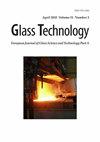人工智能对业务流程的影响
IF 0.5
4区 材料科学
Q4 MATERIALS SCIENCE, CERAMICS
Glass Technology-European Journal of Glass Science and Technology Part a
Pub Date : 2023-06-04
DOI:10.47672/ejt.1488
引用次数: 2
摘要
目的:本研究的目的是研究企业在整合和有效利用人工智能(AI)技术方面面临的挑战。它旨在全面了解人工智能技术如何产生商业价值以及它们提供的预期收益。该研究还试图确定人工智能采用和使用的促进因素和抑制因素,探索组织环境中不同类型的人工智能使用,并分析其一级和二级影响。方法:本研究采用综合文献综述研究设计。研究人员在Scopus和Web of Science等数据库中使用预定义的标准进行了系统的搜索。搜索产生了21篇相关论文,为本研究进行了分析和综合。数据收集方法依赖于对现有文献的检查。数据分析包括从选定的论文中确定关键主题、趋势和见解。研究者通过定性分析提取相关发现,并综合信息得出有意义的结论。研究结果:该研究揭示了一些关于人工智能在企业中的整合和使用的见解。这表明,组织正在努力理解人工智能技术如何产生价值,以及如何有效地将其纳入其运营中。缺乏对人工智能及其价值产生过程的全面了解被认为是一个主要障碍。此外,该研究还强调了人工智能采用和使用的促进因素和抑制因素。它确定了组织环境中各种类型的人工智能应用程序,并探讨了它们对业务运营的影响。调查结果揭示了企业在利用人工智能技术方面面临的挑战,并提出了进一步研究的领域。给从业者的建议:该研究强调了获取有关人工智能技术及其潜在价值产生过程的全面知识的重要性。致政策制定者:该研究强调需要支持性政策和法规来促进人工智能的采用。它建议创造一个促进人工智能研究和开发的有利环境。理论和验证:该研究可能受到与人工智能采用、组织变革或创新相关的现有理论的影响。实践:对于从业者来说,该研究强调了理解人工智能技术的价值和潜力的重要性。政策:对于政策制定者来说,该研究强调了促进人工智能采用和应对相关挑战的政策框架的必要性。本文章由计算机程序翻译,如有差异,请以英文原文为准。
The Impact of Artificial Intelligence on Business Processes
Purpose: The purpose of the study is to examine the challenges faced by businesses in integrating and effectively utilizing artificial intelligence (AI) technology. It aims to provide a comprehensive understanding of how AI technologies generate business value and the anticipated benefits they offer. The study also seeks to identify the facilitators and inhibitors of AI adoption and usage, explore different types of AI use in the organizational environment, and analyze their first- and second-order impacts.
Methodology: The study employed the comprehensive literature review research design. The researchers conducted a systematic search using predefined criteria in databases such as Scopus and Web of Science. The search yielded 21 relevant papers that were analyzed and synthesized for this study. The data collection method relied on the examination of existing literature. Data analysis involved identifying key themes, trends, and insights from the selected papers. The researchers conducted a qualitative analysis to extract relevant findings and synthesized the information to derive meaningful conclusions.
Findings: The study revealed several insights regarding the integration and use of AI in businesses. This indicated that organizations struggle with understanding how AI technologies can generate value and how to effectively incorporate them into their operations. Lack of comprehensive knowledge about AI and its value generation processes was identified as a major barrier. Additionally, the study highlighted the facilitators and inhibitors of AI adoption and usage. It identified various types of AI applications in the organizational environment and explored their impacts on business operations. The findings shed light on the challenges businesses face in leveraging AI technology and suggested areas for further research.
Recommendations: To practitioners: The study emphasizes the importance of acquiring comprehensive knowledge about AI technologies and their potential value generation processes. To policy makers: The study highlights the need for supportive policies and regulations to foster AI adoption. It suggests creating an enabling environment that promotes AI research and development. Theory and Validation: The study may have been informed by existing theories related to AI adoption, organizational change, or innovation. Practice: To practitioners, the study underscores the importance of understanding the value and potential of AI technologies. Policy: To policy makers, the study emphasizes the need for policy frameworks that promote AI adoption and address associated challenges.
求助全文
通过发布文献求助,成功后即可免费获取论文全文。
去求助
来源期刊
CiteScore
0.30
自引率
0.00%
发文量
0
审稿时长
>12 weeks
期刊介绍:
The Journal of the Society of Glass Technology was published between 1917 and 1959. There were four or six issues per year depending on economic circumstances of the Society and the country. Each issue contains Proceedings, Transactions, Abstracts, News and Reviews, and Advertisements, all thesesections were numbered separately. The bound volumes collected these pages into separate sections, dropping the adverts. There is a list of Council members and Officers of the Society and earlier volumes also had lists of personal and company members.
JSGT was divided into Part A Glass Technology and Part B Physics and Chemistry of Glasses in 1960.

 求助内容:
求助内容: 应助结果提醒方式:
应助结果提醒方式:


